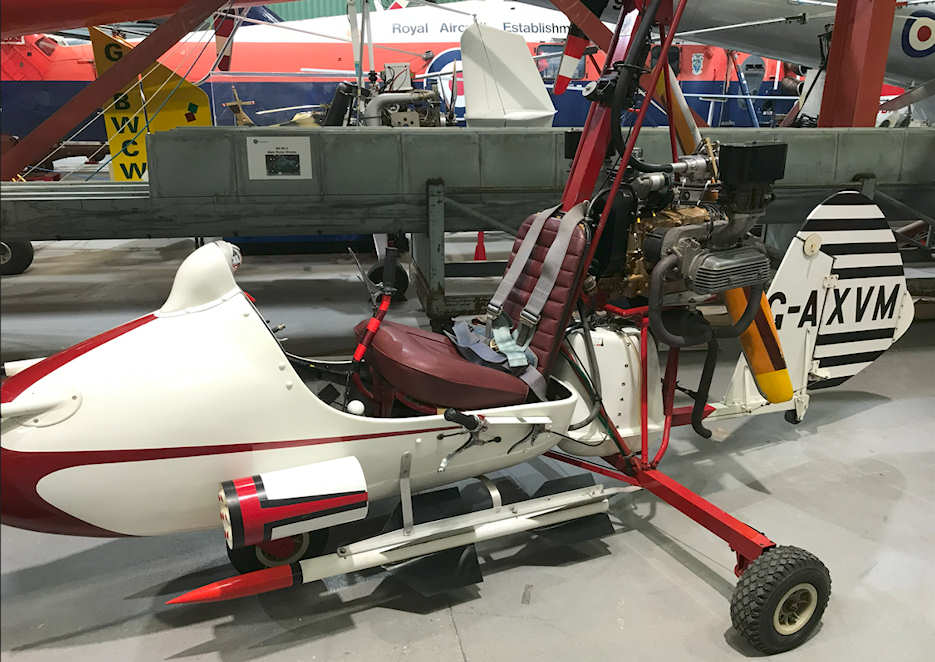Campbell Cricket

Registration: G-AXVM
Country of origin: UK
Built: Membury Berks, UK, 1970
Manufacturer: Campbell Aircraft
Constructor's Number: CA-329
Engine: One 75hp Volkswagen 4 piston engine.
Type: Single seat light autogyro
Note: 33 Crickets were produced by Campbell Aircraft Ltd. between 1969 and 1971. This one has been modified by its previous owner to resemble the "Little Nellie" autogyro in the James Bond movie..
Details: This is a single light Autogyro built by Campbell Aircraft Ltd at Membury Airfield, near Hungerford in Berkshire. This particular model G-AXVM is a Mk 1 with first 'Permit to fly' granted on 2nd of June 1970. The Campbell company brochure for the Cricket quoted a still air take-off run of 90 yards - or 35 yards if the rotor was first spun up. Landings could be achieved in two or three times the Cricket's own length. A range of 180 miles, a a cruising speed of 65mph is quoted as possible, with fuel consumption at 2.7 gallons/hour.
It was originally sold to a consortium involved with the Operations Research Department of the Special Air Services. During this time, the aircraft was assessed for covert operations and had been totally repainted in a drab olive green army colour. The log book shows only 23 hours and 40 minutes of actual flight time before being sold to a private buyer two years later in June 1972.
It then lay rotting and unloved in a barn until it was re-discovered in August 1978 and over a period of three years was meticulously restored to its original condition by Mr Robin Morton.
The aircraft was then purchased in 1981 by Mr David Organ from Cheltenham who owned it for over 40 years and amassed 620 hours of flying. He upgraded the engine and made modifications and additions (including dummy rocket pods and missile launchers) so that it resembled the iconic James Bond Autogyro "Little Nellie" from the movie "You Only Live Twice".
In May 2023 G-AXVM suffered damage to the rotorblades during a forced landing after the engine cut out at around 1,400 ft. It was donated by David Organ to The Helicopter Museum where it arrived on 12th June 2024.